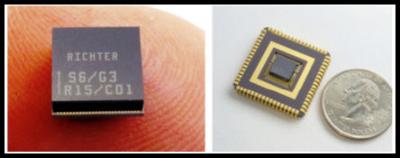 
Channel HP : Enterprise Business Blogs : Networking : HP Networking : Mega Channel Seismic Survey System: Networking a m...
Mega Channel Seismic Survey System: Networking a million devices
by HPNetworking on 06-01-2011 06:50 PM - last edited on 06-02-2011 02:33 AM
By Scott A. Lindsay, HP Networking
Imagine that you are an IT manager tasked with networking a million devices within a single location, ten meters apart from one another. Now suppose that you are told that you cannot use any cables and that electrical power will not be available to you. Finally, imagine that your networking environment is not air conditioned and carpeted, but on average is 90 degrees F with a floor of sand and rocks and no roof overhead.
HP and Shell working together
This is not a theoretical problem pulled from an academic textbook! In fact, this scenario is one of the challenges that HP and Shell are working together to solve, leading to delivery of the world’s first Mega Channel Seismic Survey System. This system will deliver a significant leap forward in gas and oil exploration and production by enabling unprecedented 4D image detail of oil and gas reservoirs below the earth’s surface.
Delivering on the CeNSE vision
The Mega Channel Seismic Survey System, part of HP’s broader CeNSE vision, is anchored by a small MEMs accelerometer developed by HP. This sensor, embedded within a small, ruggedized enclosure, is deployed just below the ground and detects underground vibrations. These vibrations are recorded and post-processed to create seismic images to represent what is below the earth’s surface, including a detailed map of complex oil and gas reservoirs.
The HP Mega Channel system is different from conventional seismic survey systems in two key ways:
The high-quality HP MEMs accelerometer provides sensitivity that is 1000 times better than those that you would find in your telephone or car airbag.
The HP Mega Channel system dramatically increases the density of survey data by enabling surveys with up to million sensors, a dramatic improvement over today’s maximum of tens of thousands of sensors.
This combination of improved quality and increased quantity of sensors will yield subsurface images far superior to current solutions.
Made possible by wireless innovation
The many benefits of this million-node sensor network are obvious, but given the industry’s historic reliance upon cabled sensors, how can such a large system be practical? The answer: Wireless innovation. HP is developing a wireless network to enable the sensors to communicate survey QC information without requiring cables.
This million-device Wi-Fi-based network will be the first of its kind, pushing the envelope for what is possible via HP innovation, allowing Shell to locate and tap into oil and gas reserves with precision never before possible.
|
